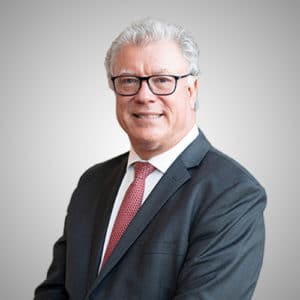- News articles
First published in the Financial Review on 05 October 2021
If you’re not across non-arm’s length expenditure rules or whether a six-member fund would suit you, it’s probably time you got specialist advice.
While the Productivity Commission’s major report into super in 2018 focused on Australian Prudential Regulation Authority-regulated funds, there were two important findings about self-managed super funds.
First, SMSF members, along with those approaching retirement or with higher balances, were more engaged with their superannuation. Second, the quality of financial advice provided to some super fund members – including those with SMSFs – was questionable and often conflicted.
To quote the PC, “the need for information and affordable, credible and impartial financial advice for retirees will increase as retirement balances grow with a maturing system and given the rising diversity and complexity of retirement products”.
These are telling comments. The PC is saying that SMSF members are engaged with their super – but often can’t get the advice they often sorely need. Yet considering SMSF members total more than 1.1 million, the number of funds is about 600,000 and assets at June 30, 2021 stood at $822 billion, clearly there is an imperative for them to be able to do so.
Certainly, the PC thought so, making the following recommendation: “The Australian government should require specialist training for persons providing advice to set up an SMSF; require persons providing advice to set up an SMSF to give prospective SMSF trustees a document outlining ASIC’s (Australian Securities and Investments Commission) ‘red flags’ before establishment; and extend the proposed product design and distribution obligations to SMSF establishment.”
Three years later, the need for this advice has only grown. The legislation underpinning SMSFs is more complex (including temporary changes because of COVID-19) and, as trustees well know, is subject to constant change. This is why it’s critical that advisers providing SMSF advice have specific SMSF competencies.
Disagreement in numbers
To take three recent examples, the proposed introduction of a retirement income covenant, the Australian Taxation Office’s non-arm’s length expenditure (NALE) ruling and the increase in the maximum number of SMSF members from four to six are all timely reminders of the need for SMSF specialist advice – and why the PC’s recommendation has never been more relevant.
Being able to transact with related parties is one of the attractions of SMSFs – whether it be acquiring a business premise from a related party that is then leased back to a related party, doing your own fund’s bookkeeping or investing in related entities within the confines of the legislation.
Many funds have such transactions, explaining why they need to be fully cognisant of the latest ATO ruling on NALE after changes to the non-arm’s length income rules in 2019. Failure to do so can result in the imposition of significant tax penalties, with some or all of a fund’s income being taxed at 45 per cent.
On the issue of the recent increase in the maximum allowable number of SMSF members from four to six, it might sound like a great idea, but there are risks. For example, more decision makers around the table is likely to lead to more disagreements.
Before adding new members, consideration must be given to how any decisions will be made and whether enduring powers of attorney should be put in place to reduce the likelihood of disputes. In these circumstances, an SMSF specialist adviser is well-placed to tailor an outcome specific to a fund’s situation.
Including as a potential problem the proposed introduction of the retirement income covenant (which aims to increase member engagement with their superannuation and retirement planning) might seem odd considering SMSFs have been specifically excluded from the legislation.
But the absence of a legal requirement doesn’t mean SMSFs shouldn’t consider the retirement needs of their members and retirement products in the market – and this will be difficult to do without specialist SMSF advice.
This advice could include:
- Developing specific drawdown patterns that provide higher incomes in retirement;
- Providing tools such as expenditure calculators to identify income and capital needs over time;
- Providing information about key retirement topics, such as eligibility for the age pension, the concept of drawing down capital as a form of income or the different types of income streams available; and
- Providing guidance to beneficiaries early in accumulation about potential income in retirement through superannuation calculators or retirement estimates.
In its report, the Retirement Income Review said a simplification of the superannuation system should be a policy imperative. It’s a motherhood statement that everyone concurs with. The only problem is that most legislative and regulatory changes tend to add complexity to the system, making it progressively more difficult for SMSFs to navigate the system. Specialist advice would seem one way to stay inside the regulatory fence and avoid the onerous penalties that can befall those who stray outside.

Opinion piece written by
John Maroney, CEO,
SMSF Association



